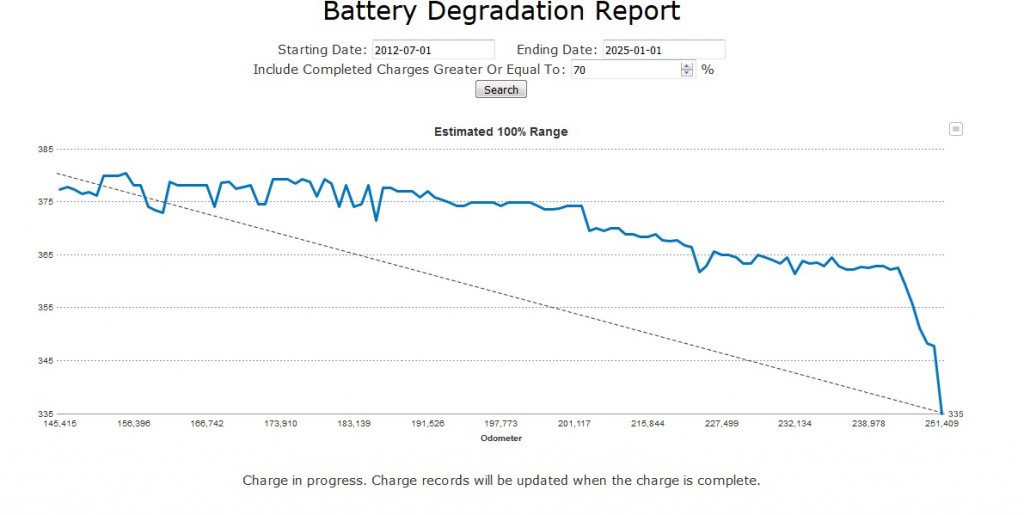What over-the-air-updates give, they can also take away.
That’s part of what's at the root of a new lawsuit against Tesla on Thursday from a California man who says that a recent software update to his 2014 Model S cut 40 miles off the maximum range of his car, and it has lost about 8 kilowatt-hours of battery capacity.
Since Tesla prices its cars according to the size of their battery packs, the lawsuit argues that the update diminished the value of the cars, and alleges fraud. In the lawsuit, lawyers for the plaintiff seek class action status on behalf of what they say are thousands of other owners facing the same issue.
Indeed, many owners have complained about a loss of range from the update in Tesla forums such as Tesla Motors Club, and on Reddit. Some have posted graphs of the loss of maximum charge capacity.

Tesla Model S battery degradation (Source: Trayloader on Tesla Motors Club)
The update came after a fire that engulfed a Tesla Model S in a Shanghai parking garage in April, which the company announced on its Chinese Weibo social media account that it had traced to a faulty battery cell.
At the time the company said it would update the battery management software on some cars to “further protect the battery and improve longevity.”
The lawsuit also alleges that Tesla pushed the software update in lieu of issuing an expensive recall for the cars’ batteries, which it claims are defective. The lawsuit says, “under the guise of ‘safety’ and increasing the ‘longevity’ of the batteries of the Class Vehicles, Tesla fraudulently manipulated its software with the intent to avoid its duties and legal obligations to customers to fix, repair, or replace the batteries of the Class Vehicles, all of which Tesla knew were defective, yet failed to inform its customers of the defects.”
"This is no different than what Apple did to their older iPhones in the throttling and performance case," lead counsel Edward C. Chen commented
The Model S 85 had Tesla's earliest large battery pack, and those cars have been on the road longer than any other Tesla models, giving more opportunities for degradation and wear in the cells from charging and potential overheating.
Tesla released the following: "A very small percentage of owners of older Model S and Model X vehicles may have noticed a small reduction in range when charging to a maximum state of charge following a software update designed to improve battery longevity. As previously noted, we have been working to mitigate the impact on range for these owners and have been rolling out over-the-air updates to address this issue since last week.”
![Tesla reportedlly catching fire in Shanghai parking garage [Video screen grab] Tesla reportedlly catching fire in Shanghai parking garage [Video screen grab]](https://images.hgmsites.net/lrg/tesla-reportedlly-catching-fire-in-shanghai-parking-garage-video-screen-grab_100699614_l.jpg)
Tesla reportedlly catching fire in Shanghai parking garage [Video screen grab]
The lawsuit points out a larger issue with convenient over the air updates, which can as easily remove capability as add it. Last September, U.S.-based consumer advocacy and testing organization Consumer Reports reported receiving a faulty update for its 2018 Model 3, which disabled the cars’ automatic emergency braking system without notifying drivers. The change affected thousands of other Teslas as well. A subsequent update restored the feature.
The organization’s Vice President of Advocacy, David Friedman, who served as Deputy Administrator of the NHTSA from 2013 to 2015, said at the time, “OTA fixes can be really convenient for consumers, but you can’t treat cars like smartphones because a new bug in your car’s safety systems can be deadly."












